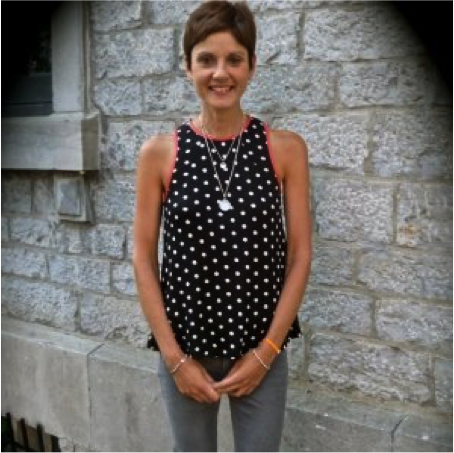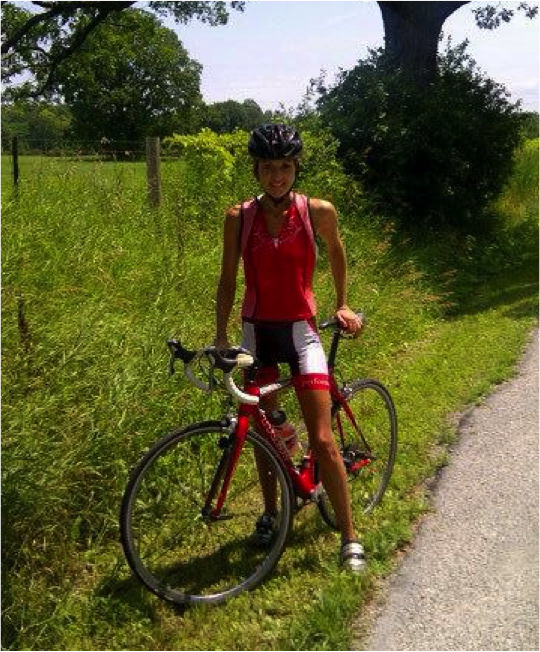Unlocking stiff person syndrome with stem cells
by Lisa Willemse
Every time we move, our muscles contract and release. Usually, we don’t notice it, unless we’re sore from unaccustomed or extreme exercise. But imagine if all the muscles in your leg suddenly contracted and didn’t let go for minutes or hours on end, leaving you painfully immobile.
Now, imagine if this happened while you were waterskiing.
 Tina Ceroni lived that horror in 2007. Without warning, her leg muscles seized and would not let go. “My legs were as stiff as the boards I was trying to ski on. It was excruciating,” Ceroni says. With only her arms to keep her afloat, she had to be rescued from the water.
Tina Ceroni lived that horror in 2007. Without warning, her leg muscles seized and would not let go. “My legs were as stiff as the boards I was trying to ski on. It was excruciating,” Ceroni says. With only her arms to keep her afloat, she had to be rescued from the water.
She was later diagnosed with stiff person syndrome (SPS), a rare autoimmune disease that affects only one in a million people. But before that diagnosis, Ceroni would have multiple trips to the hospital, her legs in muscular distress. She would also be incorrectly diagnosed with another disorder and be given drug therapies for it, which would have no effect.
Even after a positive test for glutamic acid decarboxylase, an antibody that is present in about 80% of SPS cases and a key indicator that enabled her doctor to pinpoint the disease, Ceroni continued to resist the few drug treatments available, and she gradually built up a resistance first to one, and then to a second drug that were intended to release her from symptom attacks. Special protocols and training were put in place for the Burlington EMS units to allow them to administer the drug enroute to the hospital.
With little to impede its progress, the SPS advanced and began to affect not just her legs, but her arms and respiration, as well.
“During 2010-2011, I was in the hospital 47 times,” Ceroni said. “I don’t wish to be dramatic about it, but every time I went to emergency in respiratory distress, there was a chance I would not survive it.”
Until the attack while waterskiing, Ceroni had been largely unaware of the disease’s progression. An avid athlete accustomed to the intense training required for half-Ironman triathlons, she attributed the initial bouts of milder stiffness to muscle fatigue from excess exercise. Only later did she realize they were early signs of SPS.
Exactly why the immune system begins its attack and how the GAD antibody is implicated in SPS is not known. What is known is that it is a progressive condition that often starts in middle age (though Ceroni was only in her twenties when SPS began), and that attacks are often triggered by common stimuli such as emotional upheaval, sharp movements or unexpected contact or sounds.
“As things got worse, I began to withdraw from life, to avoid those situations and events that might trigger an attack. It was a very isolating and lonely time,” Ceroni admits. “I quit work and moved back in with my parents because I could not be left alone in the case of an attack. My future was very uncertain, and it was hard not to despair. It was hard on me and my family, my parents and friends.”
 However, Ceroni was once again thrown a lifeline. She met another woman with SPS who had been the first person to receive a stem-cell transplant as an experimental therapy at the Ottawa Hospital. “This woman was like a beacon of light for me,” Ceroni says. “She was about 14 months post treatment, and she looked so good and strong.”
However, Ceroni was once again thrown a lifeline. She met another woman with SPS who had been the first person to receive a stem-cell transplant as an experimental therapy at the Ottawa Hospital. “This woman was like a beacon of light for me,” Ceroni says. “She was about 14 months post treatment, and she looked so good and strong.”
Soon after, in late 2010 – that year with so many trips to the emergency room — Ceroni found herself in the office of Dr. Harry Atkins, an OIRM research-clinician who was leading the clinical trial.
“I didn’t know much about stem cell therapies before, other than that they were being used for cancer. Dr. Atkins explained the experimental therapy to me: that my immune system would be brought down to zero, that there would be aggressive chemotherapy and a slow recovery over a year or more.”
“I realized that this treatment would also be intense, with its own risks and no guarantee of improvement. I would be only the second person to undergo this therapy for SPS. But I really felt it was my only hope for a positive future.”
Dr. Atkins asked Ceroni to take at least a month to think about the trial before making a decision and to contact him if any questions arose. But a week later, Ceroni called him back to say she was ready and in 2011 she began the process of destroying her faulty immune system so that a new one could hopefully take its place.
It worked – well beyond her own expectations in fact. After the stem cell treatment, the SPS went into remission and Ceroni is now completely symptom-free. She’s returned to work and renewed her fitness business, as well as her own athletic pursuits.
“It’s really incredible how far things have come in stem cell research. I feel incredibly lucky to have met Dr. Atkins and to have had the chance to participate in research that will help others. I feel like I’ve been given an entirely new life and for that, I’m beyond grateful.”
*Photos: Tina Ceroni as she is today, after her treatment for SPS.
